Complete Solutions to Exercise of chapter CURRENT ELECTRICITY of Class 11 book with complete answers and questions
| Class 11 | PHYSICS |
| Chapter | CURRENT ELECTRICITY |
| RESONANCE | Exercise |
| Number Of Questions | 53 |
| Academic Year | 2023-24 |
Specific resistance of a wire depends on the
View SolutionThe electric current passes through a metallic wire produces heat because of :
View SolutionFor a metallic wire, the ratio `V/i` ( `V=` applied potential difference and `i=` current flowing ) is
View SolutionIf on applying the potential of 20V on a conductor its conductance becomes `8(Omega)^(-1)`, then the current flowing through it will be:
View SolutionThe wires of same dimension but resistivities `rho_(1)` and `rho_(2)` are connected in series . The equivalent resistivity of the combination is
View SolutionThe dimensions of a block are `1cmxx1cmxx100cm.` If the specific resistance of its material is `2xx10^(-7) ohmxxmetre`, then the resistance between the opposite rectangular faces is
View SolutionWhen a resistance wire is passed through a die the cross-section area decreases by `1%`, the change in resistance of the wire is
View SolutionWhen the resistance of copper wire is `0.1 Omega` and the radius is 1mm, then the length of the wire is (specific resistance of copper is `3.14 xx 10^(-8) ohm xx m`)
View SolutionA wire is stretched to n times its length. Then the resistance now will be increase by
View SolutionThe specific resistance of a conductor increases with
View SolutionThe value of current I in the circuit will be
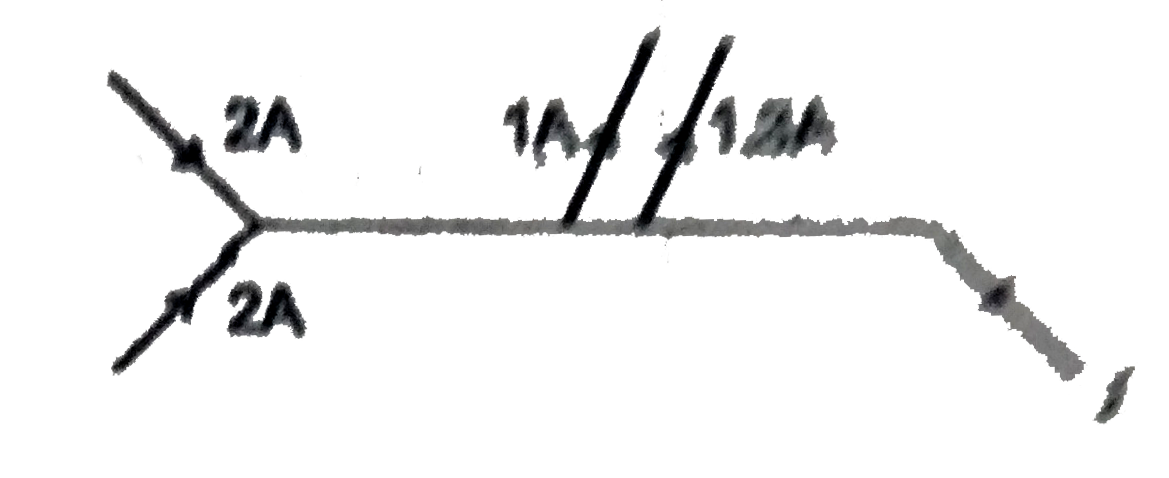
View SolutionThree wires each have resistance `2Omega`, if we connect 2 in series with one parallel to the combination the equivalent resistance is
View SolutionIn the shown circuit, what is the potential difference across A and B
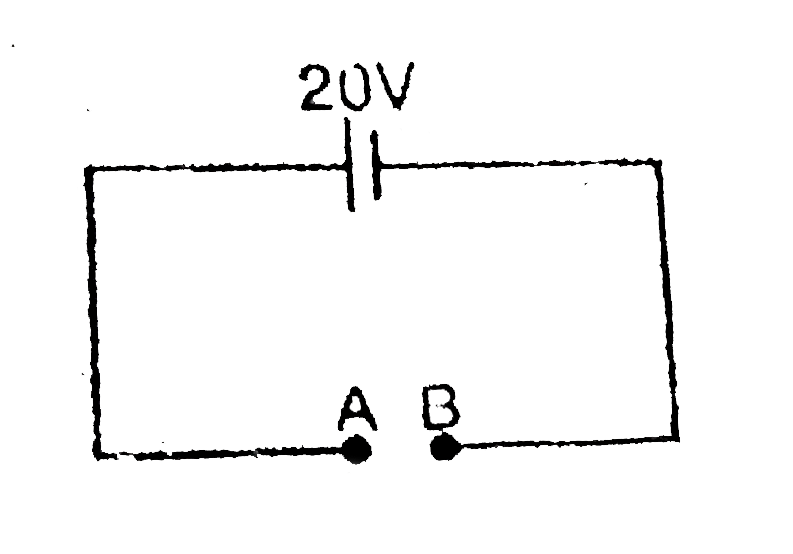
View SolutionIn the circuit element given here, if the potential at point B, `V_(B)=0`, then the potentials of A and D are given as ltBrgt

View SolutionA cell has and emf 1.5 V . When connected across an external resistance of `2Omega`, the terminal potential difference falls to 1.0V. The internal resistance of the cell is
View SolutionTwo bulbs `25 W, 220 V` and `100 W, 220 V` are given . Which has higher resistance ?
View SolutionIn the figure the potential difference across 6 ohm resistor is 48 V. Then the potential difference between A and B is
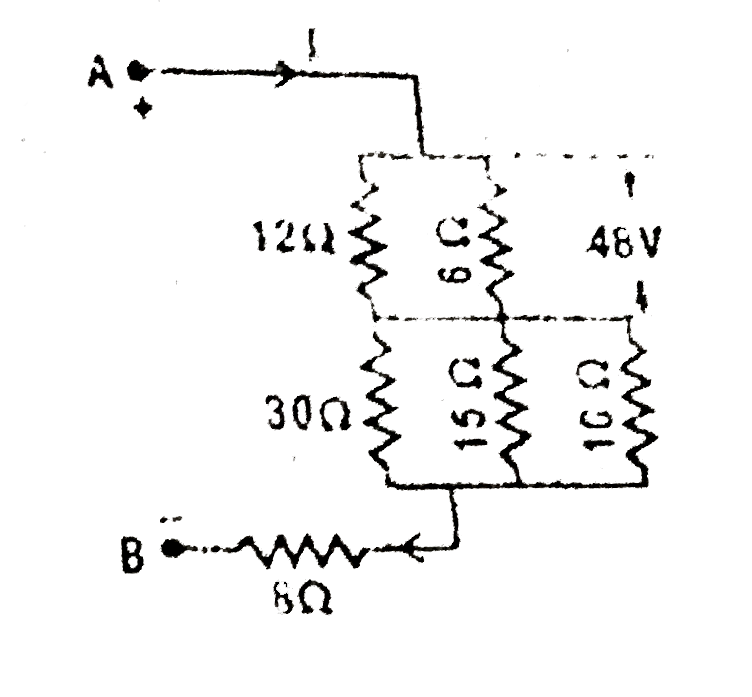
View SolutionThe total power dissipated in watts in the circuit shown here is

View SolutionA student measures the terminal potential difference (V) of a cell (of emf `epsi` and internal resistance r ) as a function fo the current (I) folwing through it . The slope and intercept of the graph between V and I, respectively, equal to
View SolutionOne filament takes 10min to heat a kettle and another takes 15 min. If connected in parallel they combindly take………min to heat the same kettle:
View SolutionThe potential difference between points `A` and `B` is

View SolutionThe potential difference between the point A and B in figure will be
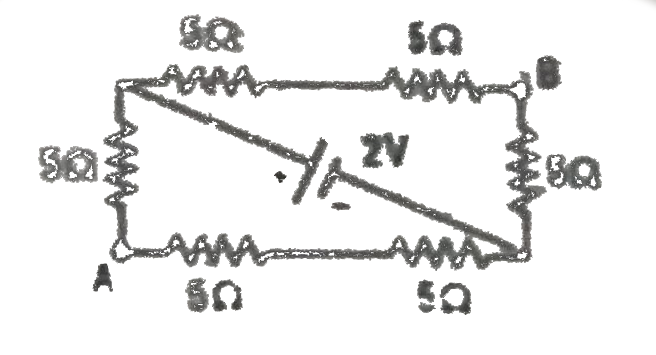
View SolutionNine resistors each of resistance R are connected in the circuit as shown in figure. The net resistance between A and B is
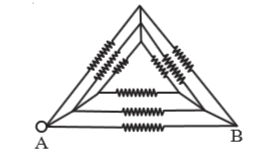
View SolutionA wire having resistance `12Omega` is bent in the from of an equilateral triangle. The effective resistance between any two corners of the triangle will be
View SolutionFor the network of resistance shown in the figure the equivalent resistance of the network between the points A and B is 18 ohm. The value of unknown resistance R is :
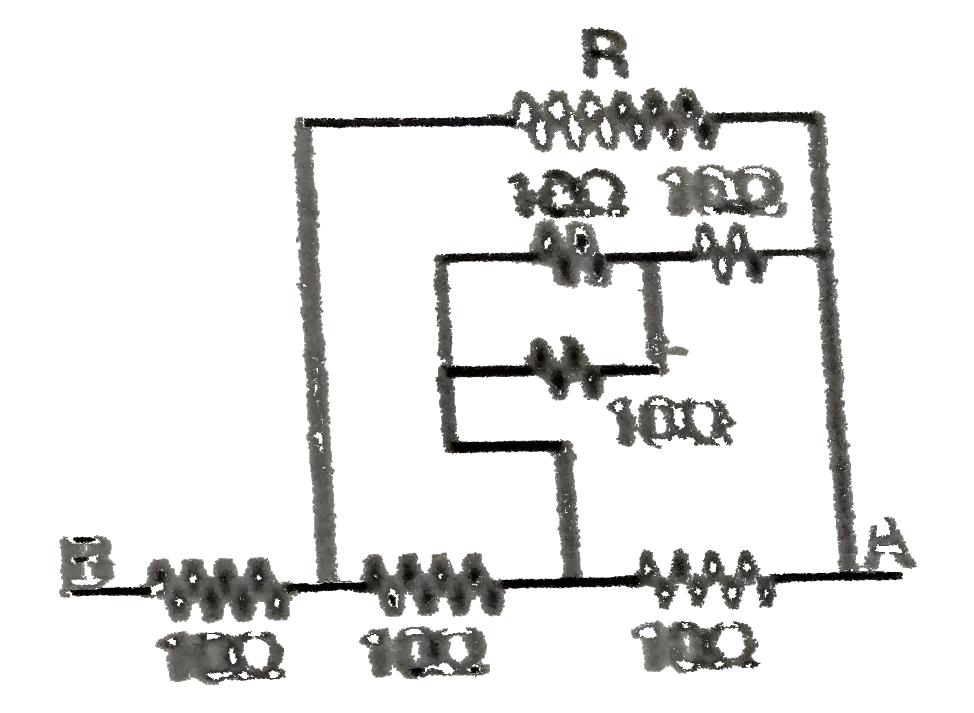
View SolutionWhen a wire of uniform cross-section a , length l and resistance R is bent into a complete circle, resistance between two of diametrically opposite points will be
View SolutionCalculate the equivalent resistance between A and B
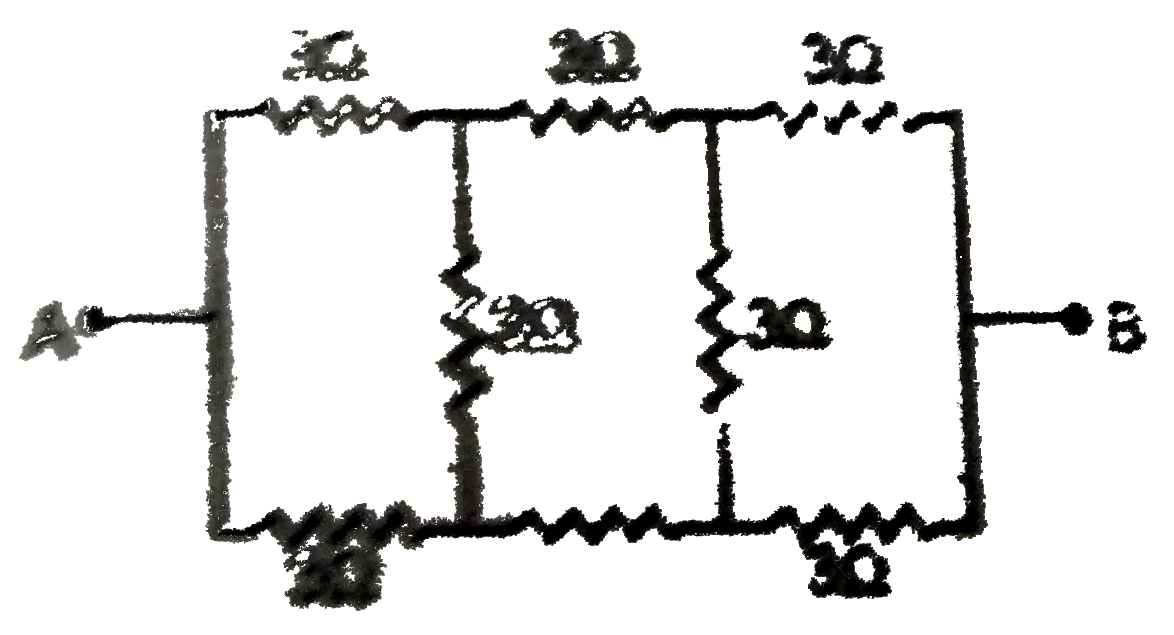
View SolutionFor what value of unknown resistance `X`, the potential difference between `B` and `D` will be zero in the circuit shown in the figure ?
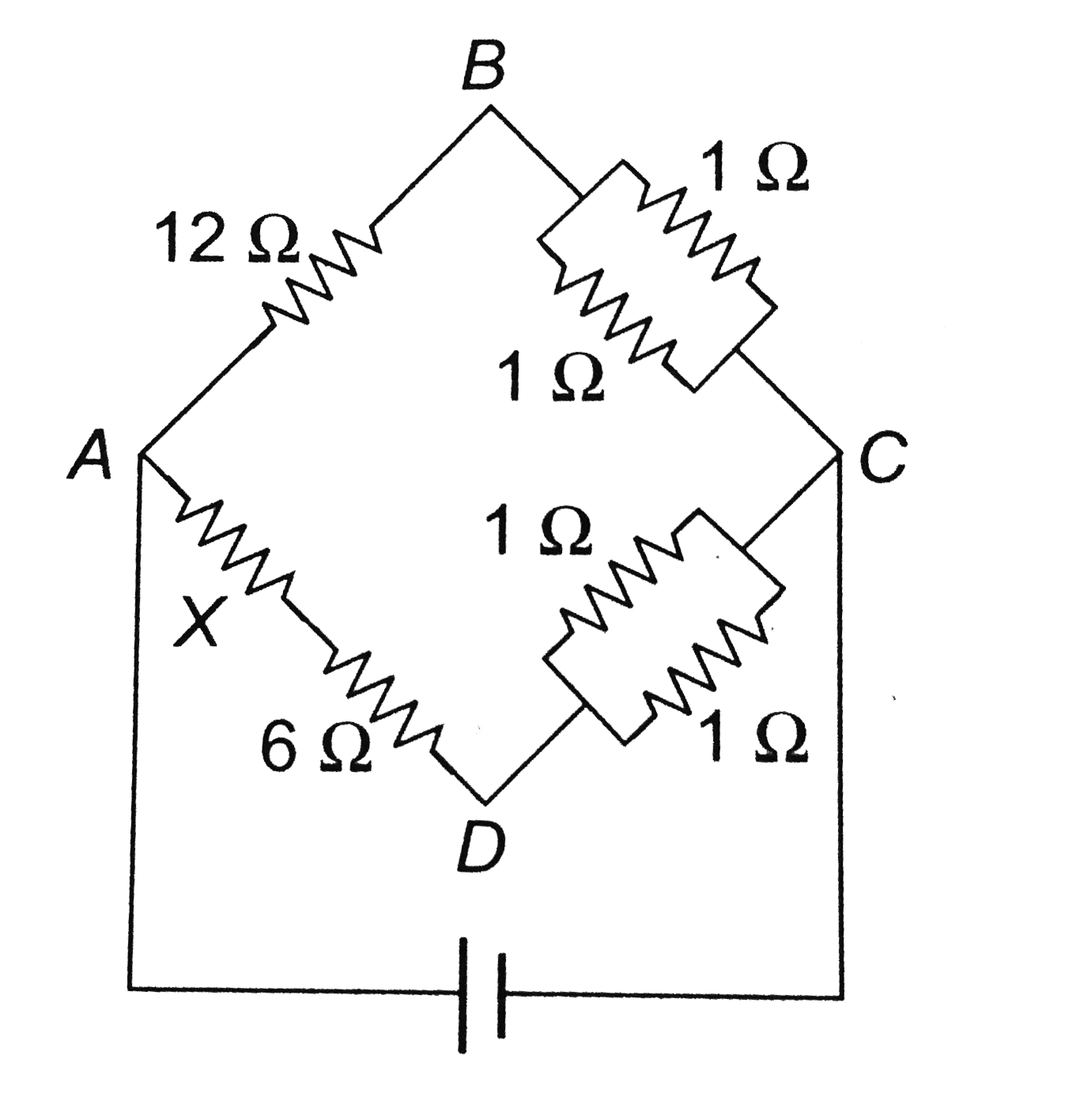
View SolutionThe value of `i_1//i_2` for a given diagram is
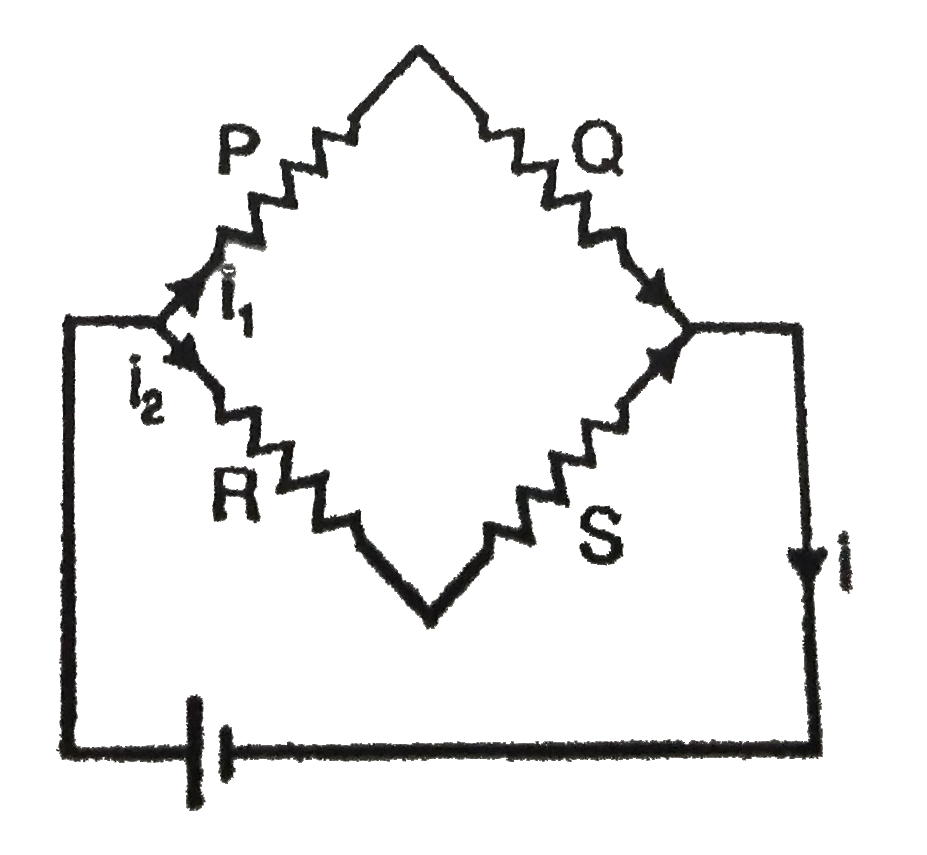
View SolutionIn the circuit shown below the resistance of the galvanometer is `20Omega`. In which case of the following alternatives are the currents arranged strictly in the decreasing order
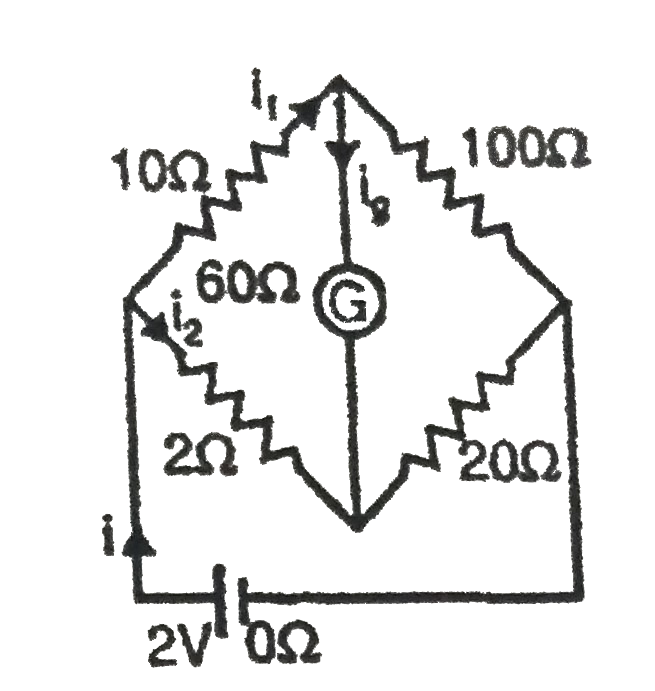
View SolutionA wire is bent in the form of a triangle now the equivalent resistance between its one end and the mid point of the side is
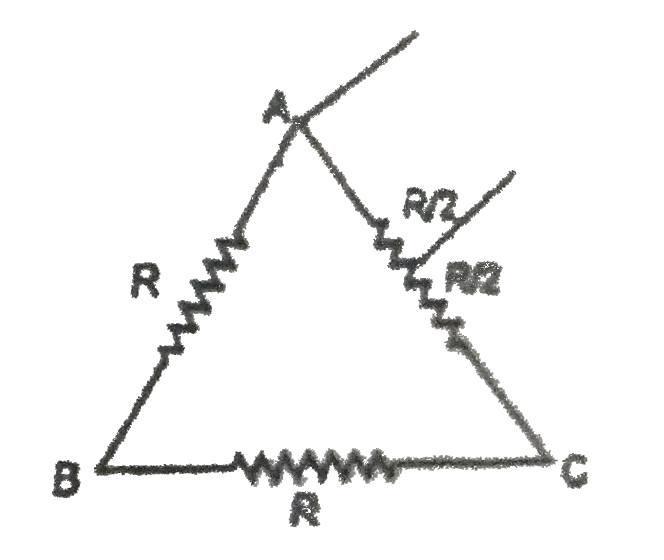
View Solutionn equal cell having emf E and internal resistance r, are connected in circuit of a resistance R. Same current flows in circuit either they connected in series or parallel, if:
View SolutionAn unknown resistance R is connected in series with a 2-ohm resistance. A current is flowing in this combination. The balancing length for potential difference across 2-ohm resistor, in a potentiometer experiment is found to be 300 cm, while the balancing length for the potential difference across the unknown R is found to be 360 cm. The unknown resistance R is
View SolutionA current of 2amp is flowing in the primary circuit of a potentiometer wire having resistance of `0.2 ohm//m`. In a coil when current of 1A flows, then potential difference across its terminals are balanced at 2.5m of the potentiometer wire. The resistance of the coil is
View SolutionFor the same potential difference, a potentiometer wire is replaced by another one of a high specific resistance. The potential gradient then (`r=R_h=0`)
View SolutionIf the current in a potentiometer increases, the position of the null point will
View SolutionIn a potentiometer wire, whose resistance in `0.5 ohm//m`, a current of 2 amp is passing. The value of potential grandient in volt/m will be
View SolutionThe potentiometer wire 10m long and 20 ogm resistance is connected to a 3 volt emf battery and a 10ohm resistance. The value of potential gradient in volt/m of the wire will be
View SolutionThe length of a potentiometer wire is 10m and a potential difference of 2 volt is applied to its ends. If the length of its wire is increased by 1m, the value of potential gradient in volt/m will be (potential difference across potentiometer wire remain same)
View SolutionThe potential gradient of potentiometer is `0.2 "volt"//m`. A current of 0.1 amp is flowing throgh a coil of 2 ohm resistance. The balancing length in meters for the potential difference at the ends of this coil will be
View SolutionThe emf of a standard cell is 1.5 volt and its balancing length is 7.5 m. The balancing length in meters for a 3.5 ohm resistance, through which a current of 0.2 A, flows will be
View SolutionThe resistance of a galvanometer coil is R. What is the shunt resistance required to convert it into an ammeter of range 4 times
View SolutionFor measurement of potential difference, potentiometer is preferred in comparison to voltmeter because
View SolutionResistivity of potentiometer wire is `10^(-7)Omega-m` and its area of cross-section is `10^(-6)Omegam^(2)`. When a current i=0.1A flows through the wire, its potential gradient is
View SolutionIn electrolysis the mass deposited on an electrode is directly proportional to
View SolutionAn ammeter and a voltmeter are joined in series to a cell. Their readings are A and V, respectively. If a resistnace is now joined in parallel with the voltmeter
View SolutionThe resistanca of an ammeter is `13Omega` and its scale is graduated for a current upto 100 connected to this ammeter it becomes possible to measure currents upto 750 A by this meter. The value fo shunt resistance is
View SolutionThree resistances P, Q, R each of `2Omega` and an unknown resistance S form the four arms of a Wheatstone's bridge circuit. When a resistance of `6Omega` is connected in parallel to S, the bridge gets balanced. What is the value of S?
View SolutionIn the circuit of figure `A_1` and `A_2` are ideal ammeters. Then the reading in ammeter `A_2` is

View SolutionThere is a voltmeter in a circuit. In order to triple its range, the resistance of how much value should be used?
View SolutionSensitivity of a potentiometer can be incresed by
View SolutionSTATEMENT 1: The current density `vec J` at any point in ohmic resistor is in direction of electric field `vec E` at that point .
STATEMENT 2: A point charge when released from rest in a region having only electrostatic field always moves along electric lines of force.
View SolutionStatement-1 : In a Meter Bridge experiment, null point for an unknown resistance is measured. Now, the unknown resistance is put inside an enclosure maintained at a higher temperature. The null point can be obtained at the same point as before by decreasing the value of the standard resistance.
Statement-2 : Resistance of metal increases with increase in temperature.
View Solution
Exercise questions and complete solutions for chapter CURRENT ELECTRICITY of RESONANCE ENGLISH of Class 11